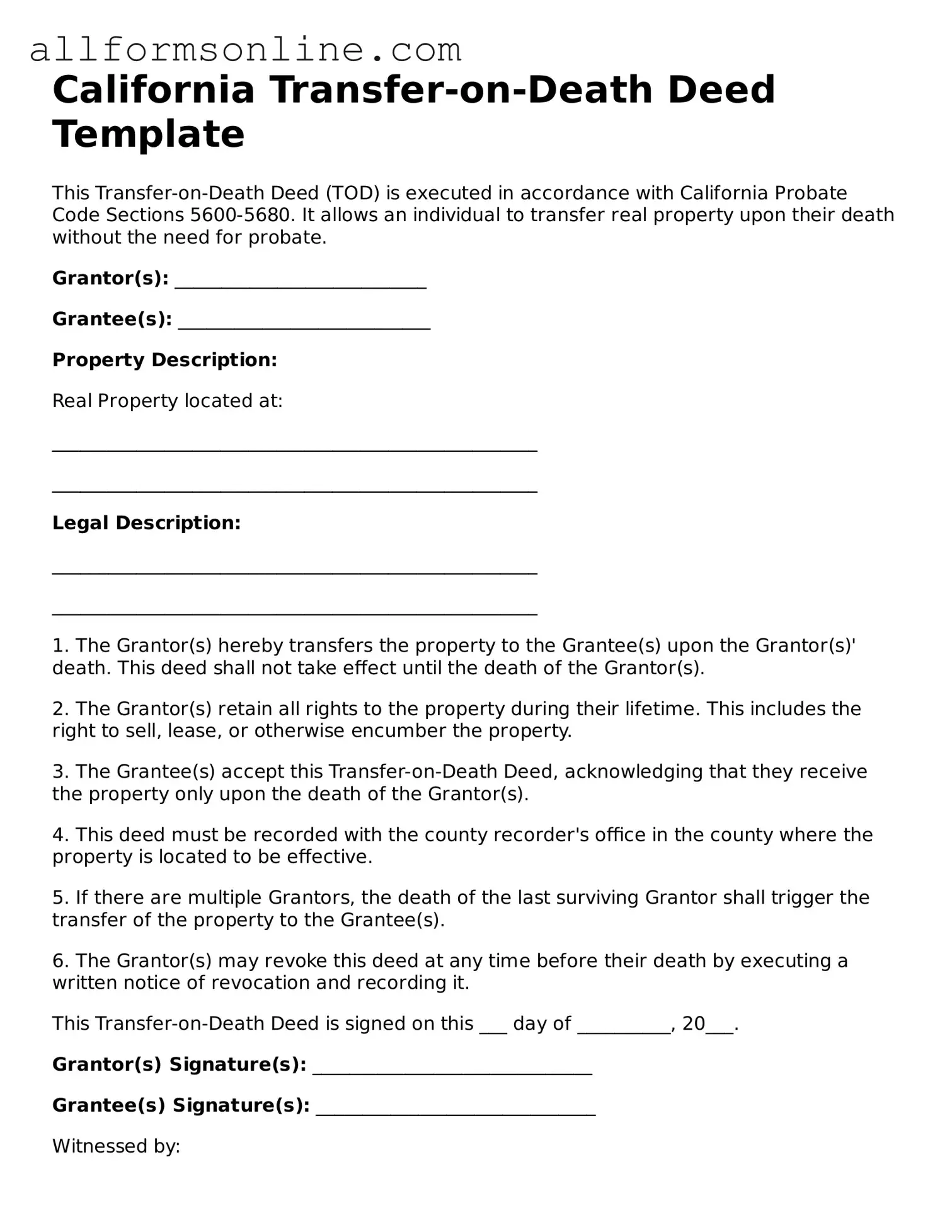What is a Transfer-on-Death Deed in California?
A Transfer-on-Death Deed (TOD Deed) is a legal document that allows a property owner in California to transfer their real estate to a designated beneficiary upon their death. This type of deed helps avoid probate, which can be a lengthy and costly process. The property owner retains full control of the property during their lifetime and can change or revoke the deed at any time before their death.
Who can use a Transfer-on-Death Deed?
Any individual who owns real property in California can use a Transfer-on-Death Deed. This includes homeowners, co-owners, and individuals who hold property in trust. It is important that the person creating the deed is of sound mind and understands the implications of the transfer.
How do I create a Transfer-on-Death Deed?
To create a Transfer-on-Death Deed, you must complete the specific form provided by the state of California. The form requires details such as the property description, the name of the beneficiary, and the signature of the property owner. Once completed, the deed must be notarized and recorded with the county recorder’s office where the property is located. Recording the deed ensures that it is legally valid and enforceable.
Can I change or revoke a Transfer-on-Death Deed?
Yes, a Transfer-on-Death Deed can be changed or revoked at any time before the property owner’s death. To do this, you must create a new deed that either names a different beneficiary or explicitly revokes the previous deed. It is advisable to record any changes with the county recorder’s office to avoid confusion in the future.
What happens if the beneficiary dies before the property owner?
If the designated beneficiary dies before the property owner, the Transfer-on-Death Deed will not be effective. In this case, the property owner should consider naming an alternate beneficiary in the deed. If no alternate is designated, the property will typically become part of the owner’s estate and may go through probate.
Are there any tax implications with a Transfer-on-Death Deed?
Generally, a Transfer-on-Death Deed does not create immediate tax consequences for the property owner. However, the beneficiary may face tax implications when they inherit the property. It is advisable to consult with a tax professional to understand any potential tax liabilities related to the transfer.
Can a Transfer-on-Death Deed be used for all types of property?
A Transfer-on-Death Deed can be used for most types of real property, including residential homes, commercial properties, and vacant land. However, it cannot be used for personal property, such as vehicles or bank accounts. For those types of assets, different estate planning tools may be more appropriate.
Is legal assistance recommended when creating a Transfer-on-Death Deed?
